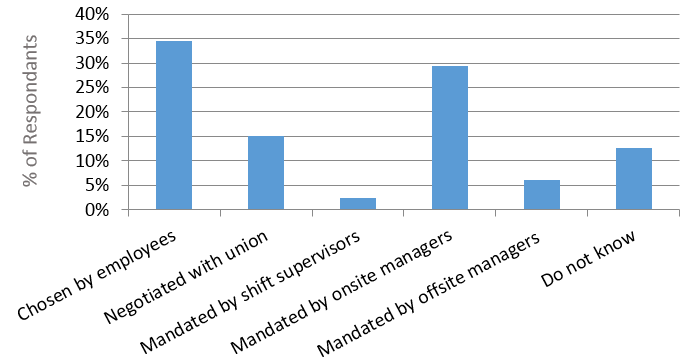Employee Sleep Education & Training: Benefits & Solutions for Your Workforce
Want to improve the health, safety, and performance of your workforce? Invest in their overall well-being and provide them with sleep education and training.
Consider this:
- Sleep-deprived workers are twice as likely to miss a day of work than their peers who get sufficient sleep.
- Excessively sleepy workers are 7 times more likely to have a workplace accident than good sleepers.
- Drivers (commuters as well as professional drivers) who get 6 hours of sleep or less are 33% more likely to have an accident on the road than drivers who get 7 or 8 hours of sleep
Learn more about the ROI of providing sleep education and the added benefits of customizing training to your staff and their work schedules (e.g., daytime staff vs shift work staff).
Sleep: A health and safety concern in the workplace
Getting enough sleep is critical for everyone, no matter the job and no matter the work schedule. Insufficient sleep has both short and long-term effects on performance, safety, and health. Sleep deprivation causes deficits similar to alcohol intoxication: decreased vigilance, reaction times, ability to learn, coordination, and memory. Researchers equate the effects of being awake for 20 hours or more with the effects of a blood-alcohol concentration of 0.08%.
In addition to neurocognitive deficits, chronic sleep deprivation is linked to a long list of chronic health conditions including anxiety, dementia, depression, hypertension, and type 2 diabetes.
How much of an issue is employee sleep deprivation in the workplace?
Safety: The scope of the sleep insufficiency problem in the workplace
Workers’ safety performance decreases when they are fatigued. Estimates suggest that more than 35% of American adults and 44% of factory workers and plant operators do not get the 7 or more hours of recommended sleep per night (or per 24 hours). A phenomenon that causes employers to bear the staggering costs of 1.2 million lost productivity working days each year.
In addition, employers pay costs associated with fatigue-related workplace accidents and incidents. One study found that insomnia alone may be the cause of more than 274,000 occupational accidents and errors, costing U.S. companies $31 billion every year.
Sleep deprivation is a global problem that has been recognized as a “public health epidemic.” Considering almost half of all Americans feel sleepy during the day between 3 and 7 days each week and 60% of night shift workers complain about sleep loss due to their work schedule, it is inevitable that your organization is bearing some of these fatigue-related risks and expenses.
What can my operation do to mitigate the costs of fatigued workers?
Education: How to help your workers get the sleep they need to stay safe at work
Educating workers on the impact of sleep deprivation at work is a win/win solution for both employers and employees. Whether you run a 24/7 or 9 to 5 operation, your workers will benefit from getting information that is designed to improve their sleep quality and boost their sleep duration.
Sleep Education & Training Workshops for day workers or shift workers is one way to provide information to your workers. Workshops, such as Circadian’s Sleep 101 Workshop, are designed to:
- Create awareness about the importance of sleep for healthy living and improved productivity.
- Inform participants about the health and safety risks associated with insufficient sleep, and.
- Offer sleep strategies that can be put to use immediately.
In addition, easy-to-read informational booklets such as Circadian’s Good Sleep Guide that contain authoritative information and practical tips can help your workers recognize the causes and consequences of sleep insufficiency, and take the steps needed to improve their sleep. Publications like this guide can be used in conjunction with a workshop or as a stand-alone resource.
Next Steps
Recognizing and emphasizing the importance of sleep to worker health and performance is a profitable safety strategy for all employers. A well-rested employee is an asset and tends to enhance the bottom line while a sleep-deprived employee can result in significant added costs, either from fatigue-related incidents or lost productivity.
Employers can take simple, low-cost steps to help their workers arrive at work well-rested. Providing sleep education and training resources (e.g., workshops and informational booklets) is a straightforward safety strategy that will help to mitigate the risks and costs associated with fatigued workers.
As the global leader in providing 24/7 workforce performance and safety solutions for businesses that operate around the clock, Circadian is uniquely positioned to help your organization determine the best approach to optimize the sleep of your workers. We work closely with corporate management to ensure that our clients’ workers are equipped and empowered with knowledge, strategies, tools, and resources to support sleep improvement.
For more information about CIRCADIAN and our sleep education and training workshops and Lunch & Learns, please visit www.circadian.com email















